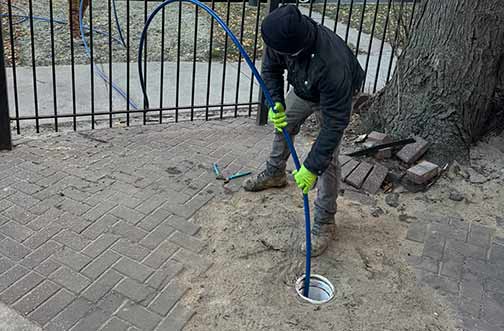
Hydro-jetting is a relatively new way of cleaning clogged drains. It has recently received considerable attention from homeowners and plumbers. Like any unfamiliar product on the market, there are several misconceptions about hydro-jetting, how it works, and what it can do.
Some people swear that hydro-jetting is the ultimate drain-cleaning solution. While others think it is not nearly half as good as the hype suggests. You want a functional drain as a homeowner with limited time and funds, notes the Whole Property Management company. This post will help you decide whether hydro-jetting is appropriate for your home’s drain issues.
Below, we explain what hydro-jetting is and dispel the myths that exist about this drain-cleaning method.
What is hydro-jetting, and how does it work?
Hydro-jetting is a novel drain-cleaning method that uses water to remove clogs and blockages from malfunctioning drain lines. It employs high-pressure water jets to blast away buildup from pipes. This water is delivered at up to 4,000 psi, enough to dislodge any blockage.
To carry out this operation, a typical hydro-jetting setup will have the following:
- A water tank where the water for the operation is stored.
- A Jeter to pressurize the water.
- A high-pressure water jetting hose. The plumber sends this hose into the affected line and can manipulate it to reach different pipeline areas.
- Specialized steel nozzles come in different sizes, depending on the type of pipe buildup. The nozzles can shoot water in a forward and backward direction at the same time.
To unclog a blocked drain, the hose is inserted into the pipe via a cleanout with the nozzle attached to one end. Water is pumped into the pipe at pressures of between 1,500 psi and 4,000 psi. That is enough pressure to blast away sludge, grease, and tree roots. For difficult blockages, hot water may be used.
Common hydro-jetting myths and the facts about hydro-jetting
Hydro-jetting is the same as a regular drain snake
This myth claims hydro-jetting is the same as an older drain-cleaning method known as snaking. That is incorrect because drain snakes use a rotating auger to remove debris inside a pipe, while hydro-jetting uses high-pressure water. Moreover, snaking bores a hole through the blockage to restore water flow but leaves debris inside the pipes. Hydro-jetting dislodges the blockage and also washes the debris out of pipes.
Hydro-jetting is not for residential plumbing systems
The myth says hydro-jetting is only effective for cleaning industrial drainage systems but should not be used for your home’s drain pipes and sewer lines. That is a myth because when jetting a pipe, water pressure levels can be adjusted for that particular pipe. Also, there are different nozzle sizes for various pipe diameters. Hydro-jetting is a highly effective method that works well for both commercial and residential plumbing systems.
Hydro-jetting will damage your pipes
This myth claims that the high water pressure used in hydro-jetting is bad for pipes and can weaken them or cause leaks. That is only true when amateurs perform hydro-jetting. A sewer camera inspection is done before jetting a pipe to avoid damage. The inspection allows the plumber to determine the pipe’s age and condition and decide the safest way to hydro-jet them.
Hydro-jetting is expensive
This myth says that hydro-jetting is costly, and there is no justification for this expense. That is not true because to determine the actual value of hydro-jetting, you must look beyond the immediate dollar costs. The value of hydro-jetting is that it can prevent other expensive drainage issues in the future. Without hydro-jetting, you will eventually pay more for drain maintenance in the long run. The fact is that hydro-jetting is highly cost-effective.
Hydro-jetting is only a temporary solution
Due to how blatantly false it is, this is probably the worst myth on this list. Hydro-jetting is the drain-cleaning method with the longest-lasting results. That is because, unlike other methods which focus on restoring water flow inside the pipes, hydro-jetting washes the debris –the root of the problem – out of the pipes. That is why hydro-jetting can be a preventive drain maintenance tool; yearly hydro-jetting your drains prevents issues.
Anyone can perform hydro-jetting
This myth claims that anyone can safely hydro-jet a drainpipe if they have the right equipment. That is misleading. Not all professional plumbers are qualified to hydro-jet sewer lines. That is because hydro-jetting follows a detailed process. When hydro-jetting a line, there are essential considerations that not only impact the quality of the job but also determine the health and longevity of your pipes.
To conclude, hydro-jetting is inarguably the safest and most effective drain-cleaning method around. However, to get the full benefits of this method, it is essential to work with an experienced expert.


